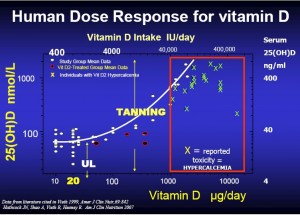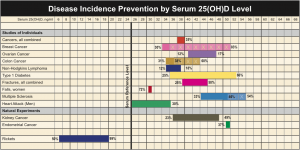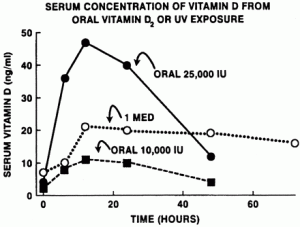Understanding Vitamin D Cholecalciferol
Technically not a “vitamin,” vitamin D is in a class by itself. Its metabolic product, calcitriol, is actually a secosteroid hormone that targets over 2000 genes (about 10% of the human genome) in the human body. Current research has implicated vitamin D deficiency as a major factor in the pathology of at least 17 varieties of cancer as well as heart disease, stroke, hypertension, autoimmune diseases, diabetes, depression, chronic pain, osteoarthritis, osteoporosis, muscle weakness, muscle wasting, birth defects, periodontal disease, and more.
Vitamin D’s influence on key biological functions vital to one’s health and well-being mandates that vitamin D no longer be ignored by the health care industry nor by individuals striving to achieve and maintain a greater state of health.
You can read the article below but little is given on the actual levels that are safe or dangerous and at what levels is it effective. For Vit D this is a little more complicated than the typical LD50 (lethal dose for 50% of the population). Below are some graphs to help explain:
The first is the amount that can cause problems such as calcifying your muscles causing them to turn into bone like structures… No Kidding.
You can click on the graph for a larger version.
The next graph is the one that will show the blood levels that are effective against several diseases.
Now last is the graph of the amount of that enters your blood from a dose D2 and it’s decay over the following hours. Please note that these graphs are all for D2 but the recommended type of D is D3.
So the current recommended dosing is 6000 IU to 10,000 IU twice a week of vitamin D. So get some D into your body, get your blood levels checked, but most important of all make sure what you are taking is the D3 version.
Triple That Vitamin D Intake, Panel Prescribes – WSJ.com.


